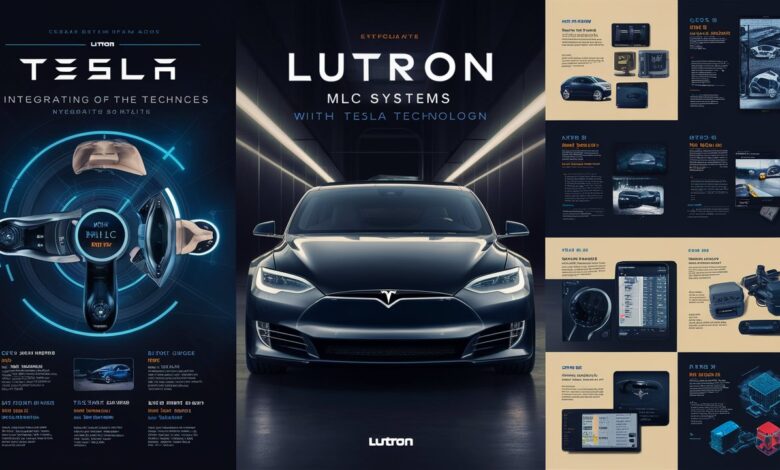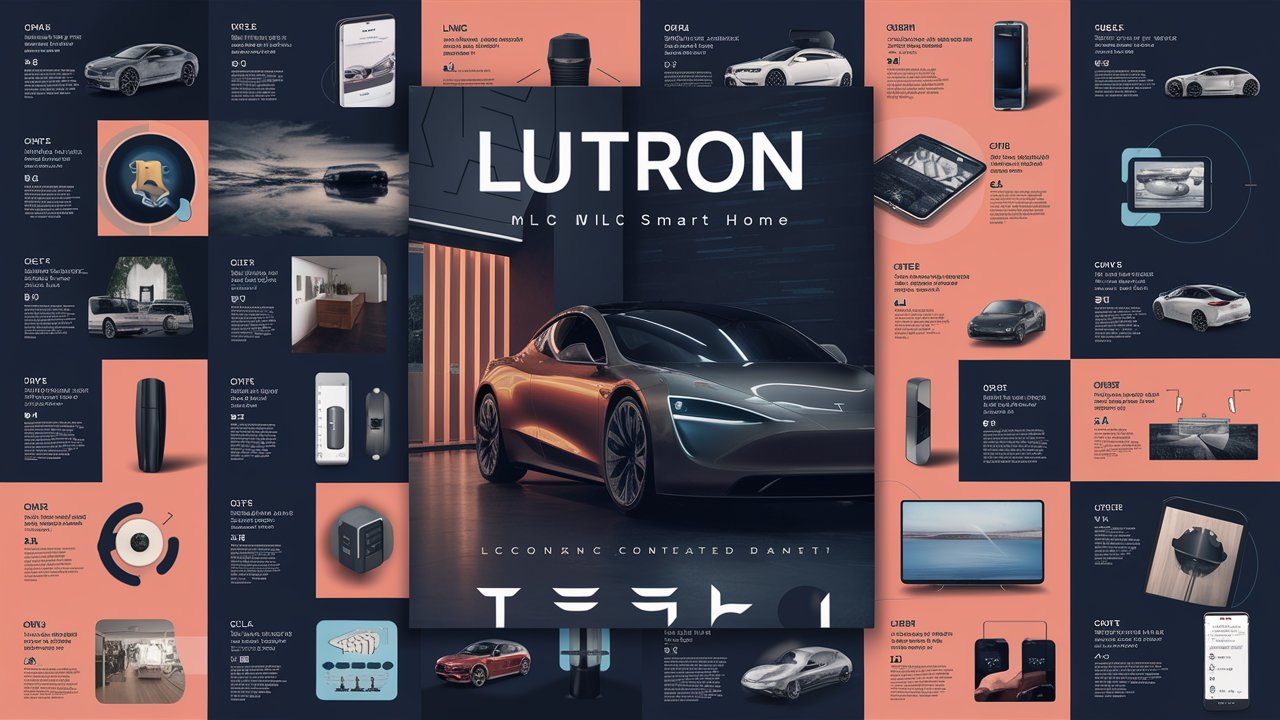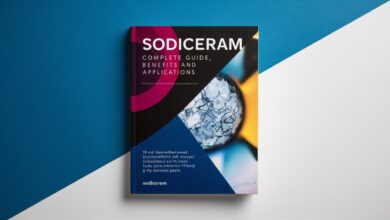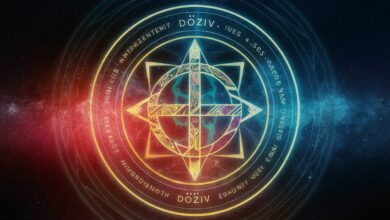Does Lutron MLC Work with Tesla? A Complete Integration and Compatibility Guide

In today’s world of smart technology and sustainable energy, integrating lighting controls with advanced systems like Tesla’s Powerwall and EV chargers is becoming increasingly important. Many homeowners and professionals ask: Does Lutron MLC work with Tesla? The answer requires understanding both systems—Lutron’s MLC (Micro Lighting Control) and Tesla’s smart energy ecosystem—to determine how they interact, integrate, and perform together.
This comprehensive guide explores compatibility, integration methods, benefits, setup requirements, and troubleshooting tips, giving you a complete understanding of how to make Lutron MLC and Tesla systems work seamlessly in your smart home or commercial environment.
Understanding Lutron MLC: What It Is and How It Works
Lutron MLC (Micro Lighting Control) is a compact yet powerful lighting control system designed to deliver precise dimming, occupancy sensing, and energy efficiency. It’s widely used in commercial and residential environments for automated lighting control. The MLC works by detecting presence and ambient light levels, automatically adjusting lighting output to maintain optimal energy savings and user comfort.
The system is modular and programmable, often integrated with building automation systems or smart hubs. Lutron’s MLC stands out for its reliability, low-voltage operation, and compatibility with advanced control protocols like DALI, 0-10V, and wireless RF.
Understanding Tesla Smart Ecosystem
Tesla’s energy ecosystem includes several cutting-edge products:
-
Tesla Powerwall – A home battery storage system that manages energy consumption and backup power.
-
Tesla Solar – Panels that generate renewable energy for residential or commercial use.
-
Tesla EV Chargers – Devices that provide efficient charging for Tesla electric vehicles.
-
Tesla App – A unified control interface for managing energy, charging, and home power usage.
Tesla’s ecosystem is built for automation, efficiency, and real-time control, allowing seamless integration with other smart home devices through APIs and third-party integrations.
Does Lutron MLC Work with Tesla Systems?
In direct terms, Lutron MLC does not natively integrate with Tesla Powerwall or Tesla EV chargers through Tesla’s proprietary app or cloud API. However, indirect integration and compatibility are achievable through third-party platforms or smart home ecosystems such as Home Assistant, Control4, or SmartThings.
By linking both systems through a smart hub or gateway, users can establish conditional automation—for example:
-
Dimming lights when EV charging starts
-
Turning off non-essential lighting when Powerwall switches to backup mode
-
Adjusting ambient lighting based on energy demand or solar generation
Therefore, while Lutron MLC doesn’t connect to Tesla directly, interoperability is possible via integration layers and automation software.

Integration Methods: How to Connect Lutron MLC with Tesla
1. Using Smart Hubs or Gateways
To make Lutron MLC and Tesla work together, a bridge or smart hub is needed. Recommended solutions include:
-
Home Assistant – Open-source platform supporting both Tesla and Lutron integrations via community add-ons.
-
Control4 – A professional-grade automation system offering deep integration for lighting and energy devices.
-
Hubitat Elevation or SmartThings – Smart hubs capable of linking multiple ecosystems through automation routines.
Through these hubs, you can create scenes and automations such as:
-
Lights dim automatically when Tesla EV charging initiates.
-
Lights brighten when Powerwall reaches full charge capacity.
-
Lights turn off during grid outage mode to conserve stored energy.
2. Using API-Based Automation
For advanced users, integration can be achieved through Tesla API and Lutron Integration Protocol (LIP). By connecting both via custom scripts, you can automate lighting based on real-time Tesla data, such as:
-
Battery percentage
-
Charging status
-
Energy consumption
This method requires technical expertise, but offers precise and customized control.
3. Integration via Voice Assistants
Both Lutron MLC (via Caséta or RA2 Select) and Tesla systems are compatible with Amazon Alexa, Google Assistant, and Apple HomeKit. Through these platforms, you can use voice commands and automation routines to synchronize functions, e.g.:
-
“Alexa, start charging and turn on garage lights.”
-
“Hey Google, reduce lighting when charging starts.”
This indirect method offers user-friendly control without deep technical setup.
Benefits of Integrating Lutron MLC with Tesla Systems
1. Enhanced Energy Efficiency
Combining Tesla’s energy management with Lutron’s intelligent lighting creates a holistic energy-saving solution. By synchronizing lighting operations with Tesla’s Powerwall or solar generation, you can minimize energy waste and maximize renewable usage.
2. Greater Automation and Control
Integration enables smart automation scenarios. For example, when Tesla Powerwall shifts to backup mode, Lutron can automatically dim non-essential lights, prioritizing critical circuits and extending backup duration.
3. Improved Sustainability
By aligning lighting control with solar power availability, users can ensure lighting consumption matches green energy output, promoting a more sustainable home environment.
4. User Comfort and Safety
Automations enhance comfort—turning lights on during EV charging at night—or safety—activating pathway lighting when your Tesla vehicle arrives home.
Common Challenges and Troubleshooting
Despite its advantages, some challenges may occur during integration:
-
Compatibility Issues – Ensure your Lutron MLC version supports external integration or protocol control.
-
API Limitations – Tesla’s API access may require authentication tokens or rate-limited data, affecting real-time response.
-
Network Configuration – Both devices must be connected to the same network and configured properly through a reliable hub.
-
Firmware Updates – Keep both systems updated to maintain stable performance and avoid disconnection errors.
Using official integration guides and verified plugins can significantly reduce setup errors and improve overall stability.
Future Outlook: Lutron and Tesla Smart Energy Synergy
With the rise of smart grids, energy automation, and AI-driven optimization, the future holds strong potential for direct collaboration between Tesla and Lutron. As APIs become more open and IoT interoperability expands, we may soon see native integrations that make energy and lighting control fully synchronized for the ultimate smart home experience.
Conclusion
While Lutron MLC and Tesla systems don’t currently integrate natively, they can work together effectively through smart hubs, third-party software, and automation tools. This integration enables dynamic energy management, intelligent lighting control, and enhanced sustainability—empowering homeowners to create a smarter, greener, and more efficient environment.
For best results, invest in reliable hubs, updated firmware, and professional setup, ensuring a seamless and responsive experience across both ecosystems.
Frequently Asked Questions (FAQ)
1. Can Lutron MLC connect directly to Tesla Powerwall?
No, there’s no direct connection, but integration is possible via smart hubs or third-party platforms.
2. Do I need technical knowledge to integrate them?
Basic integration can be done using voice assistants; advanced automation requires technical setup through APIs or Home Assistant.
3. Can I automate lights based on Tesla charging status?
Yes, through smart hubs or custom scripts, you can trigger lighting events when charging starts or stops.
4. Is Lutron Caséta the same as MLC?
No. Caséta is a residential-grade wireless system, while MLC is typically used in commercial applications. Integration options may differ.
5. Will Lutron and Tesla release direct integration in the future?
Possibly. As smart ecosystems evolve, direct interoperability between Tesla and Lutron may become available.



